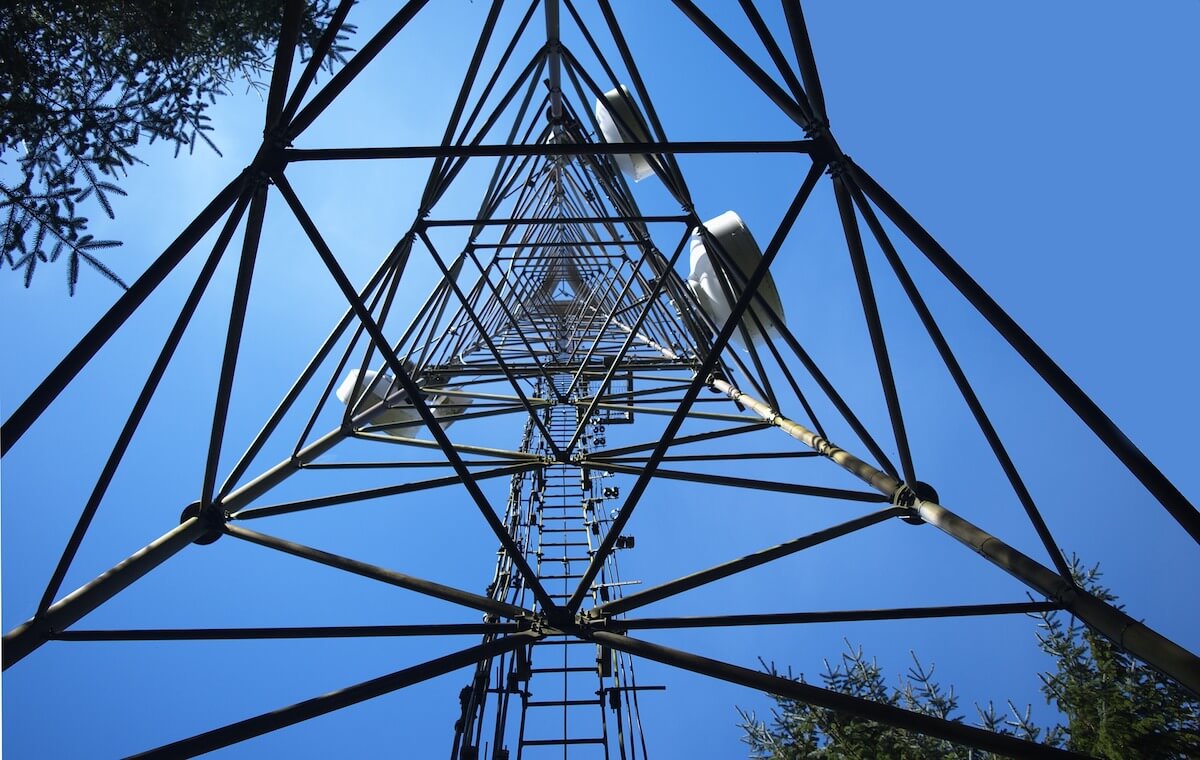Robust Computer Connectivity
The past few decades have seen great improvements in the technology used to connect one computing device (computer, smartphone, tablet, et al.) to another. Some connections are between computers that are right next to each other—server farms and databanks compete with and often replace giant mainframe computers. Some are via a physical connection—twisted pair copper wire gives way to coaxial cable now giving way to optical fiber. Others are via radio waves in various bands—analog to 2G to 3G to 4G to 5G in cellular radios, the flavors of WiFi and fixed wireless.
In all cases, bandwidth (the number of bits of information per second) and reliability are going up, and latency (the stops and starts in a given datastream) is going down. The cost to the supplier and the price to the user are also going down. “Faster, better, cheaper” is still true in connecting computing devices to one another, even as the same process in computing power itself may be slowing down.
Much has been done to improve the technology and distribute it more widely, although the attempt to deem computer connectivity a “necessary utility” instead of a “nice-to-have luxury” continues. Public and private actions in various times and places have speeded up or slowed down distributing the newest technologies, which now include optical fiber for physical connection and 5G for cellular wireless, sometimes with enhanced WiFi or ultrafast fixed wireless.
Source: Cisco VNI, 2017. Available here.
Despite all the fits and starts, the latest technologies, especially optical fiber and 5G, are appearing in many more places, more often together rather than apart. These areas include some of our largest cities, a surprising number of small towns, and even some rural, high-value agriculture areas. The issue for this article is not whether that spread should take place, if it should take place faster, or which policies speed up or slow down the process. Instead, we recognize that it is happening and explore the implications for private and public action.
The Federal Communication Commission has defined broadband as at least 25 megabits per second download and 3 MBPS upload, without regard to latency or reliability. For us, “robust computer connectivity” is something much higher, starting in the 50 to 100 megabits per second range in both the down and up directions, with high reliability and low latency. In wireless, 4G is still under that, short-range WiFi is about there, but only some fixed wireless systems, 5G wireless, and optical fiber networks are at this level consistently. Since 5G and highspeed fixed wireless are just starting, we will focus on the spread of optical fiber networks (and note that both 5G and highspeed fixed wireless need optical fiber to deliver data to and from their radio antennas).
The number of sites passed (meaning the fiber comes close enough that the site could have access for a reasonable price), including single-family homes, small firms, and multiple dwelling units, continues to grow apace. We refer you to studies done by Michael Render for the Fiber Broadband Council and reported on by Broadband Communities Magazine for the latest numbers.
Private Sector Implications
Thanks to studies by Michael Curri at Strategic Networks Group and others, we know that both small firms and families make much more extensive use of computer connectivity when they have a fiber network rather than some other kind. Individuals do more job searching, personal improvement, and home-based economic activity; small firms use such networks to automate more of their activity and to deal more online with customers and suppliers. Note this is besides more binge-watching of movies, TV shows, and sports events. Certain activities such as working with photographs, video files, medical files, and detailed maps require the high speed and high reliability of the latest generation of fiber networks.
We also see a growth in interactive entertainment since these networks typically have much higher upload speeds and much lower latency. Gamers can keep up with the competition, and those using virtual reality or augmented reality can work with data and computer processing located someplace away from the end-user. Much of artificial intelligence and machine learning requires a great deal of computer power applied to a large amount of data, so relying on a server farm and a databank to supplement a local device helps.
Also, larger firms are learning how to build value from their suppliers, employees, and customers having robust computer connectivity. Uber, Lyft, and similar services allow a firm in a single place to coordinate the activities of associates (whether employees or independent contractors) distributed far and wide. AirBnB and similar services allow a firm in one place to connect buyers and sellers in their systems even though both the buyers and sellers are far from each other. Online retailers of all types are learning to do the same thing; the network becomes the marketplace to connect large and small buyers and sellers from all over the world.
Nowhere is “mass customization” more visible than in targeted advertising where the network connections make matching advertising on almost a one-customer-at-a-time basis.
More robust networks allow more intensive interaction and engagement—using augmented reality to show a prospective buyer how a product might look if it were in the buyer’s home or on the buyer’s body, for instance. Coupling a robust network with additive (3D) manufacturing and other such tools can allow significant customization for better buyer satisfaction and enable sellers to carry less in-advance inventory. This article by Sunhil Pande shows what sorts of things to consider. Companies that operate in or can afford to limit themselves to customers with optical fiber connections can further differentiate themselves by exploiting the increased bandwidth (especially upstream), the increased reliability, and the lower latency that those suppliers and customers have.
Finally, note that the device at the edge of the network is more and more often operating without a human: the Internet of Things. Firms are increasingly using the power of the network to track materials, supplies, equipment, and products. The networks can help with remote maintenance, remote provisioning, and remote tracking of leased or rented items.
Public Sector Implications
Consider the implications for public institutions in their role of delivering goods and services. If citizens and other prospective clients are on a robust network, public activity can be faster, better, and cheaper—from drivers’ licenses and motor vehicle license renewal, to receiving applications and issuing permits, to more customized education and healthcare services. As the networks become more robust, a public agency can do more. Instead of just voice reports, citizens can submit photos, sound recordings, or videos, and the government can provide podcasts, instructional videos, and elaborate charts that were not feasible when the only connection was a telephone line.
Source: Cisco VNI, 2017. Available here.
Policy Implications
Many issues have emerged, and the spread of a robust network is likely to exacerbate them. One is privacy. What can firms and agencies learn about the people they deal with, what should they learn, and how should they use it? Another is security. Challenges include unintended disclosure that might be harmful, misuse of such disclosures, and perhaps intentional placing of false information or malicious commands towards the device or what it controls. Traffic lights, fire alarms, building locks, and even refrigerators can all cause harm if sent wrong signals via a network.
Using computer networks to spread false information was a big concern in the 2016 US presidential election. Even though “dirty tricks” had occurred in earlier elections, the need to use postal mail or telephone limited the size and number that could be carried out. Computer networks in general, and robust networks in particular, raise those limits much higher.
Concluding Thoughts
These much more robust networks, largely based on optical fiber, with greatly higher bandwidth in both directions, much lower latency, and much higher reliability, are being installed across the US and the world at an increasing rate—even if public policy and private action are not as supportive as the network proponents want. They are already installed in many places and are coming within months or years, not decades, in many others. The wise private organization and the wise public agency would do well to track these installations and get ready to deal with the implications for their organizations.
Join the Catalyst Monitor
Join our community, where we push out regular insights to help maintain situational awareness on technological and socioeconomic trends.



